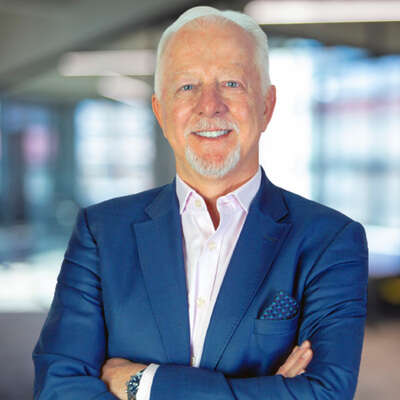Artikel und Nachrichten
People, Planet & Profit: The Evolving Sustainability Leader, Part I
Perspectives from Boyden’s Industrial Practice Group Experts
ESG mandates, stricter regulations, market forces and other factors are pushing sustainability to the top of the corporate agenda. Sustainability strategies and plans for executing them have become business imperatives – making the head of sustainability one of the most in-demand functions.
The need to deliver on both sustainability and profitability goals, and identify opportunities within this new environment, is prompting executive teams to re-examine their talent requirements and look beyond their industries. Against the backdrop of unprecedented challenges, a different type of leader is emerging, gaining more importance, and wielding more influence.
Exploring the issue further, we share the expert opinions of Boyden's Industrial Practice subsector leaders from across the globe: Jutta Menzenbach (Automotive), Neil Morrison (Infrastructure & Transportation), Patrick Reynolds (Infrastructure & Transportation), and Tom Zay (Energy).
In conversation with Boyden’s Global Industrial Practice Leader, Francesca d'Arcangeli, the group examines the shifts within several sectors as companies move to implement sustainability measures and
secure effective sustainability leaders.

d'Arcangeli: What elements of sustainability, in terms of economic, environmental or social approaches, are of particular focus in your sectors?
Zay (Energy): In the industrial space, sustainability is driving the development of breakthrough technologies, as well as incremental change in everyday processes across the entire supply chain. Forward-thinking companies see sustainability as an opportunity to create competitive advantage by investing in new sustainable offerings that benefit customers.
We see the greatest opportunity in assisting growth-oriented companies that are focused on providing services and equipment that help solve their customers’ sustainability needs. Some will create a completely new technology while others will look strategically at their customers’ pain points and create new value-added services that differentiate themselves in the market.
Morrison (Infrastructure & Transportation): Transportation, as a sustainable service, is under increasing scrutiny. With 90% of the world's trade moving by sea, the cost to the environment is immense. This has been exacerbated by China’s current lockdown, which is causing huge port congestion. As these ships idle, waiting to be unloaded, they create significant pollution. But the industry is committed to total decarbonisation by 2050, and a number of major shipping companies are targeting to utilize carbon-neutral or green fuel. The solution is still some way off, but this will have a significant impact on removing the one billion metric tons of carbon dioxide emitted into the air every year.
Menzenbach (Automotive): In the automotive industry, there are three main drivers that are of growing importance in the area of sustainability: zero-emission vehicles, carbon-neutral manufacturing, and sustainability along the value chain. In addition to that, social issues should go hand in hand with the extraction of rare materials.
d'Arcangeli: What triggers are demanding and driving action?
Reynolds (Infrastructure & Transportation): Consumer expectations for sustainable solutions with low impact on climate change, air quality and wildlife, including marine life are major drivers. The industry is incorporating innovation, technology and some elements of operations that are low to net-zero impact, while also ensuring consumers and communities are well served. This triggers sustainability concepts across all phases of planning, design, supply chain, construction, and operations.
Some might consider Indigenous communities to be a trigger as well, but I consider them a catalyst to promote more sustainable business practices to protect land and animals.
Menzenbach (Automotive): Developments in sustainability in automotive are not only driven by stricter emission regulations, but by greater awareness of environmental issues and sustainability in society. This is reflected in the increasing demand for electric vehicles. Thus the trend is driven as much by market forces as it is by legislation.

d'Arcangeli: What does all this mean for talent? From your perspective, where are the biggest gaps?
Zay (Energy): Sustainability must be a strategic imperative and led from the top. It must be a core element of an organization’s values and strategic plan, and made operational through enhanced leadership, commercial and operational processes.
Companies should challenge themselves to think more long term about the operational leaders they hire and focus on people who can add long-term value and not just immediate results. That includes bringing in people with fresh perspectives from other industries, and rebalancing the requirement for product or service expertise and emphasizing leadership qualities, business acumen, strategic thinking, change management, career diversity, adaptability and resourcefulness.
Morrison (Infrastructure & Transportation): Slowly but inevitably transportation companies are looking to engage talent in the area of sustainability – the challenge of course being supply and demand. But developing a sustainability strategy is front of mind.
Senior executives tasked with developing and executing a strategy are often recruited from professional firms, or the responsibility is outsourced to consultants. However, as ESG becomes more of an imperative, we will likely see a transfer of skills across sectors, with industry knowledge being advantageous rather than mandatory.
d'Arcangeli: For companies that have yet to implement sustainability work streams or appoint a sustainability leader, what barriers have you observed?
Reynolds (Infrastructure & Transportation): Companies generally need a reason to create new roles and add expenses. Those that have stepped up with sustainability work streams and leaders have largely needed to, in order to enhance their social license and move projects forward to grow or sustain their business. Some companies have been more proactive and created the function because it’s the right thing to do, but others with less need for social license will likely require some other incentive.
Menzenbach (Automotive): The issue of sustainability is generally highly integrated into the corporate strategy. There are clear goals, and they are taken seriously. At the same time, the economic aspect is always in the foreground. And yet, those currently hired to lead sustainability are often perceived as the ‘typical environmentalist’, lacking the economic perspective needed to make decisions that will convince the board of directors and supervisory board.
Ultimately, a business enterprise looks at the figures and results. This is what tips the scales when it comes to decisions on sustainability. For example, if sustainable production is too expensive in one country, the company will switch to another. Therefore, arguments in favour of sustainability should always be based on economics, though with a view to the future.

d'Arcangeli: What are the key objectives of the head of sustainability role?
Menzenbach (Automotive): First of all, the head of sustainability should know the industry well and also know the methodologies for creating a lifecycle assessment, which includes measuring the carbon footprint of the company and its products.
There are a variety of key objectives, starting with the development of a sustainability strategy. The strategy must then be translated into a clear action plan that leverages sustainability as a differentiator in the market. The head of sustainability should be able to argue economically.
Another objective is to develop sustainability expert groups by providing informative scientific content from along the value chain, connecting target audiences within the business, and contributing to upskilling the entire organization.
There is also an outreach element, which entails building an external network of environmental authorities, commissions and industry associations. The head of sustainability should attend international conferences to improve the company’s sustainability expertise, performance and reputation.
Morrison (Infrastructure & Transportation): Broadly, the role will address objectives around people, planet and profit. Key attributes include the ability to think creatively, outstanding communication and influencing skills, and exemplary networking skills.
d'Arcangeli: To build on that, what is the ideal profile to meet these objectives?
Zay (Energy): Executives charged with executing sustainability-driven growth initiatives will need to have strong leadership qualities and be strategic thinkers, adept at managing change. Diverse industry and functional experience is also important, along with attributes like adaptability, resourcefulness, a team orientation and collaborative style.
Change is happening more frequently, and finding superstars who embody everything required to anticipate new risks and market changes is a challenge. Managers will find it increasingly difficult to manage all the variables impacting their organizations. Strong leaders with effective delegation skills and ability to develop high-performing teams with complementary skill sets are critical.
Reynolds (Infrastructure & Transportation): I’d add that environmental science credentials and experience are likely table stakes for top candidates. In Canada, stakeholder and Indigenous engagement skills will also be critical to success, as well as exceptional communication, listening and influencing skills.

d'Arcangeli: The role of the chief sustainability officer is being shaped mostly by Fortune 500 companies. How is this role different in other organisations?
Morrison (Infrastructure & Transportation): The scope and scale might differ, but the role is the same, whether in a Fortune 500 company, SME or tech start-up: addressing objectives around people, planet and profit.
Fortune 500 MNCs might have a longer track record in sustainable operations and investment, CSR, ethical trading and the like, but this race is not necessarily about gaining a competitive edge. That said, there are advantages to taking the lead in sustainability. Retail giants have a role to play in decarbonizing the shipping industry, for example. Companies like Amazon, Alibaba and JD.com in China making commitments to support zero-emission shipping sends a signal that other companies will follow.
Menzenbach (Automotive): The majority of SMEs that implement sustainability are intrinsically driven. The larger the company is, the more the influence of B2B customer requirements or regulation becomes noticeable, even if these are not directly serving as drivers. Many companies shy away from anchoring sustainability organisationally and creating transparency with the help of a framework such as the Global Reporting Initiative. However, without a framework in place, this rarely leads to a systemic approach that opens up further opportunities.
d'Arcangeli: What is the future of the head of sustainability role?
Zay (Energy): Sustainability involves compliance, strategy and operations. Many public companies, driven by ESG mandates, initially assigned accountability for sustainability to a corporate-level chief sustainability officer position along with responsibility for government affairs, communications, public affairs, legal and the like.
Now the CSO role in public companies is transforming from a PR focus to setting ESG strategy across products and services. It will become increasingly more connected to finance and operational functions to ensure accurate data capture and the development of metrics that measure change at all levels.
While private companies are not governed by ESG mandates, many will adopt ESG principles for ethical reasons, to meet customer requirements, and to ensure broader access to capital. Few privately held and smaller companies have a standalone sustainability role at the corporate level. For private companies, the CEO will need to provide the vision and accountability for sustainability as it is executed through the executive leadership team.
Like the safety function in industrial companies, sustainability will become a core part of the strategic agenda and daily culture, where accountability is held by functional and operating management at each level in the organization.
Reynolds (Infrastructure & Transportation): Across industrial companies, the head of sustainability role will continue to grow in importance and influence. The most significant factor affecting the future of this function will be the extent to which the global community decides that the impact of climate change is a priority to be addressed.
Climate change is unlikely to be solved by 2050, and the extent to which companies enhance their sustainability functions will be most significantly impacted by government policy, incentives and disincentives like carbon taxes. Some companies will prioritize ESG on their own, but history tells us that most will require some form of incentive from public policymakers.








